Welcome to the heritage sites in Goa, where every corner whispers tales of its rich heritage.
Amidst the vibrant beaches and bustling markets lie the treasures of the top 12 historical places in Goa. The UNESCO World Heritage Sites in Goa list.
These sites silently witness the region’s illustrious past, offering a glimpse into its colonial history and cultural heritage. Besides the sun-kissed shores and lively festivities, exploring these remarkable landmarks adds depth to one’s journey.
Moreover, delving into the intricacies of these sites reveals a deeper connection to the roots of this coastal paradise.
Basilica Of Bom Jesus
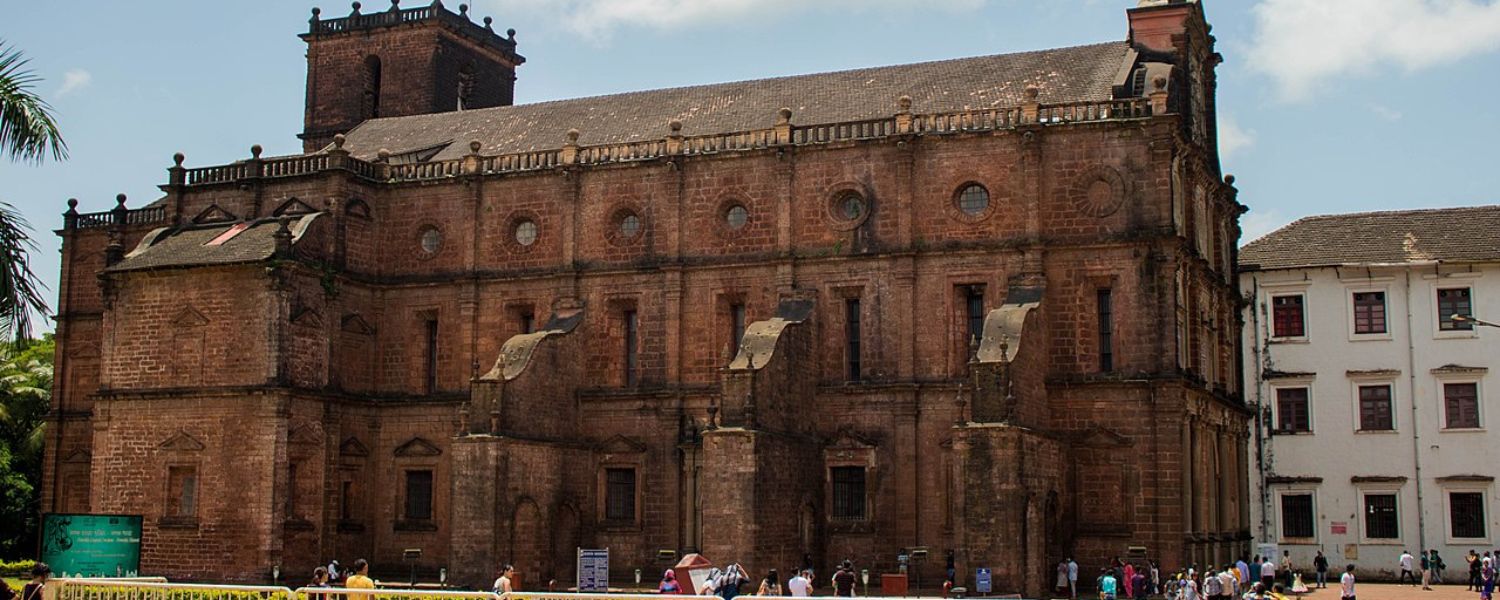
Nestled 9 km from Panjim Kadamba Bus Stand lies the illustrious Bom Jesus Basilica, a UNESCO World Heritage Site and an insider part of Goa’s cultural tapestry.
Also known as St. Francis Xavier’s Tomb, this architectural marvel beckons travelers from far and wide. Its construction commenced in 1594, culminating in May 1605, marking the inception of India’s first Minor Basilica.
A blend of Doric, Corinthian, and composite styles adorns its black granite façade, standing 183 ft long, 55 ft wide, and 61 ft tall.
Inside, mosaic Corinthian architecture hosts paintings depicting the life of St. Francis Xavier, whose sacred remains find sanctuary here.
Legend has it that Xavier’s body, transferred to Goa in 1553, remains remarkably preserved.
Aguada Fort
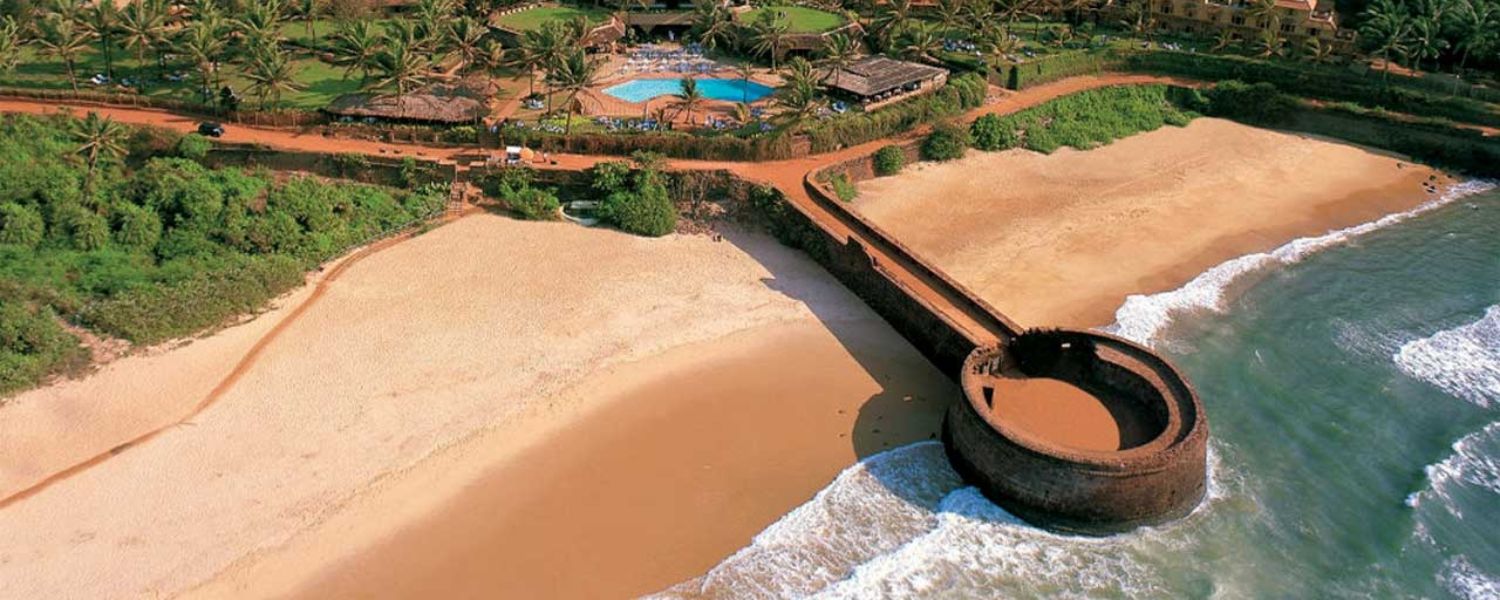
Standing 15 km from Panjim Kadamba Bus Stand, Aguada Fort symbolizes Goa’s defensive prowess against Dutch and Maratha invasions.
Built in 1612, its name ‘Aguada,’ meaning water, derives from a freshwater spring within. Guarded by 200 cannons and a dry moat, this fortress boasts the first lighthouse in Asia.
Once a bastion of Portuguese power, it now serves as a central jail, preserving relics like a bell salvaged from the ruins of St. Augustine Tower.
Aguada Fort is a testament to Goa’sGoa’s rich maritime heritage and you can explore the unexplored beaches in Goa.
Shri Mangueshi Temple
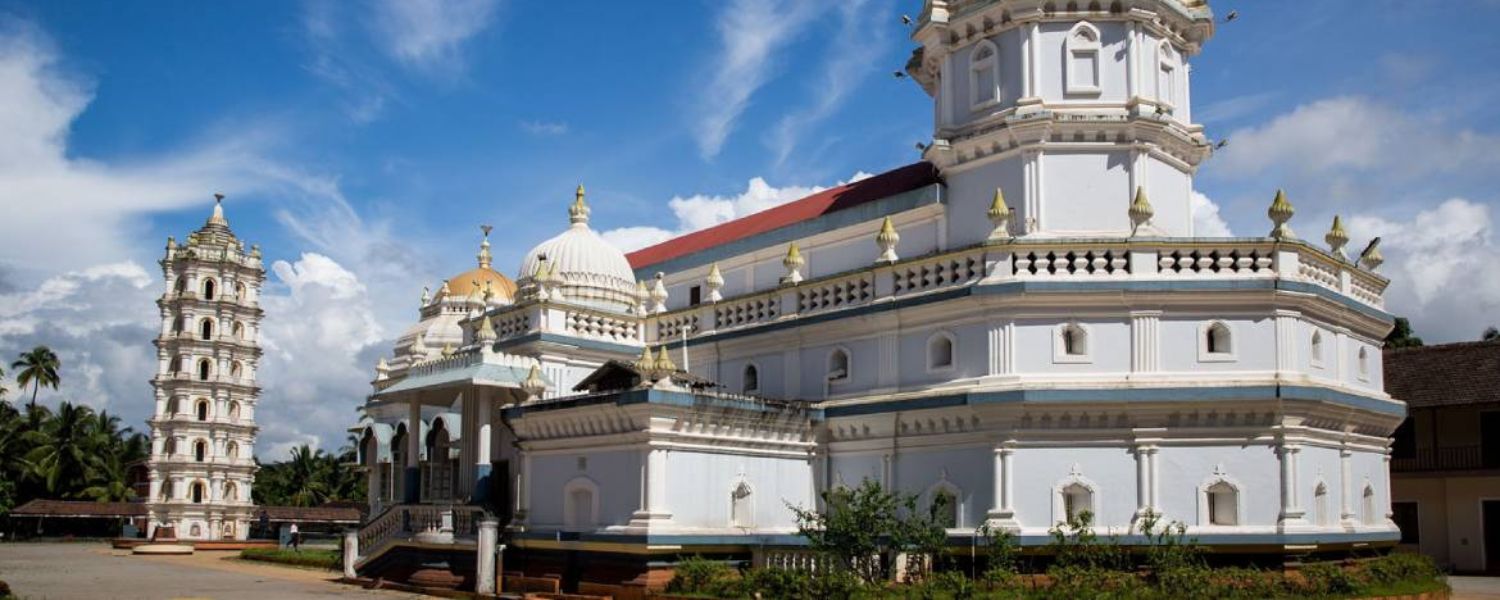
Nestled amidst the serene surroundings of North Goa, the Shri Mangueshi Temple is a beacon of Hindu spirituality. Located atop a hillock in Mangeshi Village, this temple holds a special place in the hearts of peoples and tourists alike.
Legend has it that Lord Shiva, known as ‘Manguesh’ here, sought refuge in Goa after a celestial game of dice. His divine presence, marked by a temple at the site, has drawn pilgrims for centuries.
The temple’s history is as fascinating as its mythology. Built around 1744 with contributions from local rulers, it has weathered time through renovations and reconstructions.
A testament to faith and devotion, Shri Mangueshi Temple continues to inspire reverence and awe among visitors.
Se Cathedral
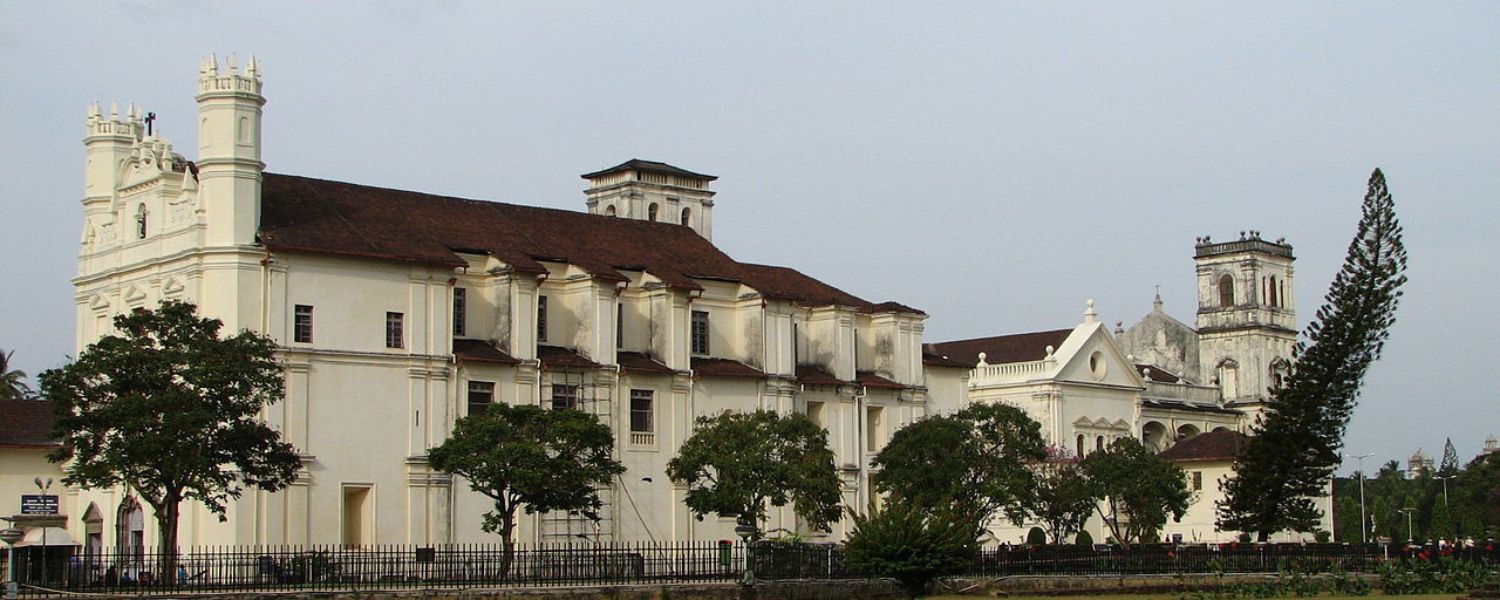
In the heart of Old Goa stands the magnificent Se Cathedral, a testament to the grandeur of Christian architecture.
Dedicated to St. Catherine, this colossal structure is one of Asia’s most prominent churches of Goa and a UNESCO World Heritage Site.
Its construction, spanning over eight decades, reflects the perseverance and craftsmanship of generations past. The cathedral’s significance extends beyond its architectural marvels.
Steeped in history, it bears witness to the triumph of Alfonso Albuquerque over the Muslim army in 1510.
Completing this sacred edifice in 1640 marked a milestone in Goa’s religious landscape, earning it the title of St. Catherine’s Cathedral.
Reis Magos Fort
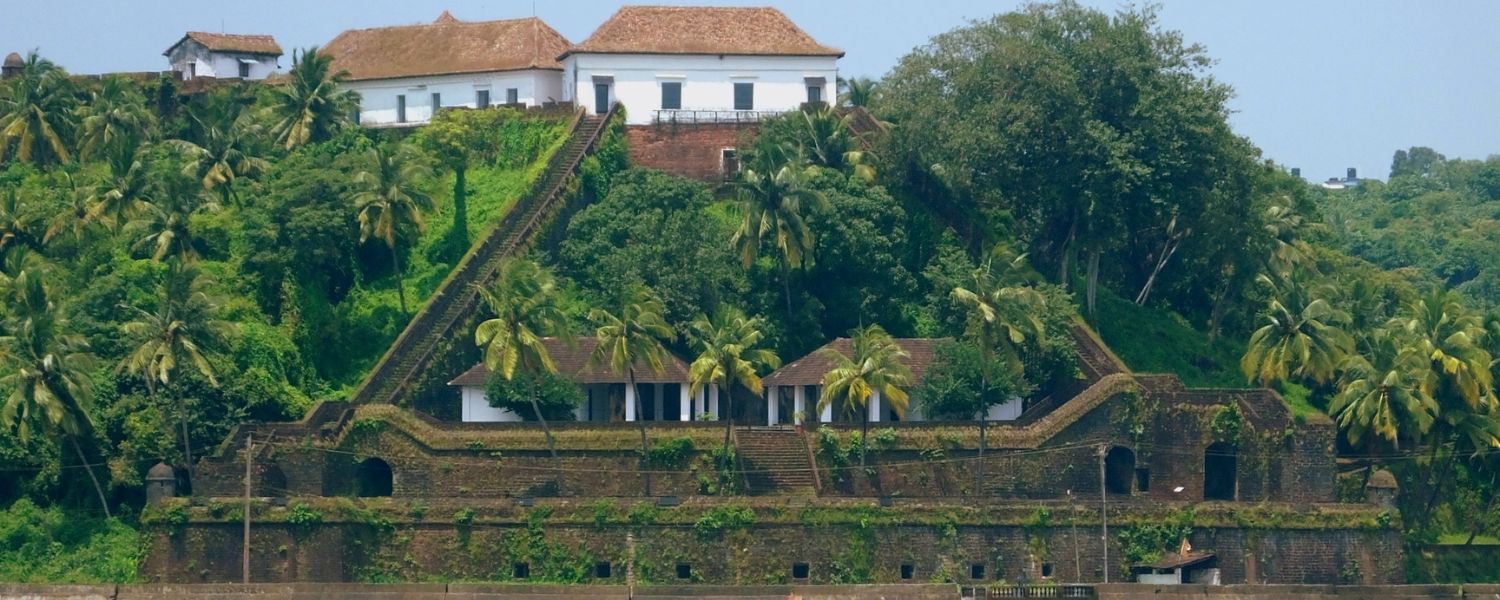
Situated on the northern bank of the River Mandovi, across Panaji, the Reis Magos Fort is a pivotal heritage site in Goa.
Initially established by the Adil Shah in the late 15th century, the Portuguese reconstructed this fort in 1551 and later fortified it in 1707.
Primarily serving as a shelter for rulers, it later gained significance as a defense against Maratha invasions in 1739. Despite its relatively modest size compared to other Goan forts, it played a crucial role in Goa’s history.
Briefly occupied by the British between 1798 and 1813, it eventually served as a prison until 1993. The Archaeological Survey of India oversees its restoration, preserving its historical essence for future generations.
Chapora Fort
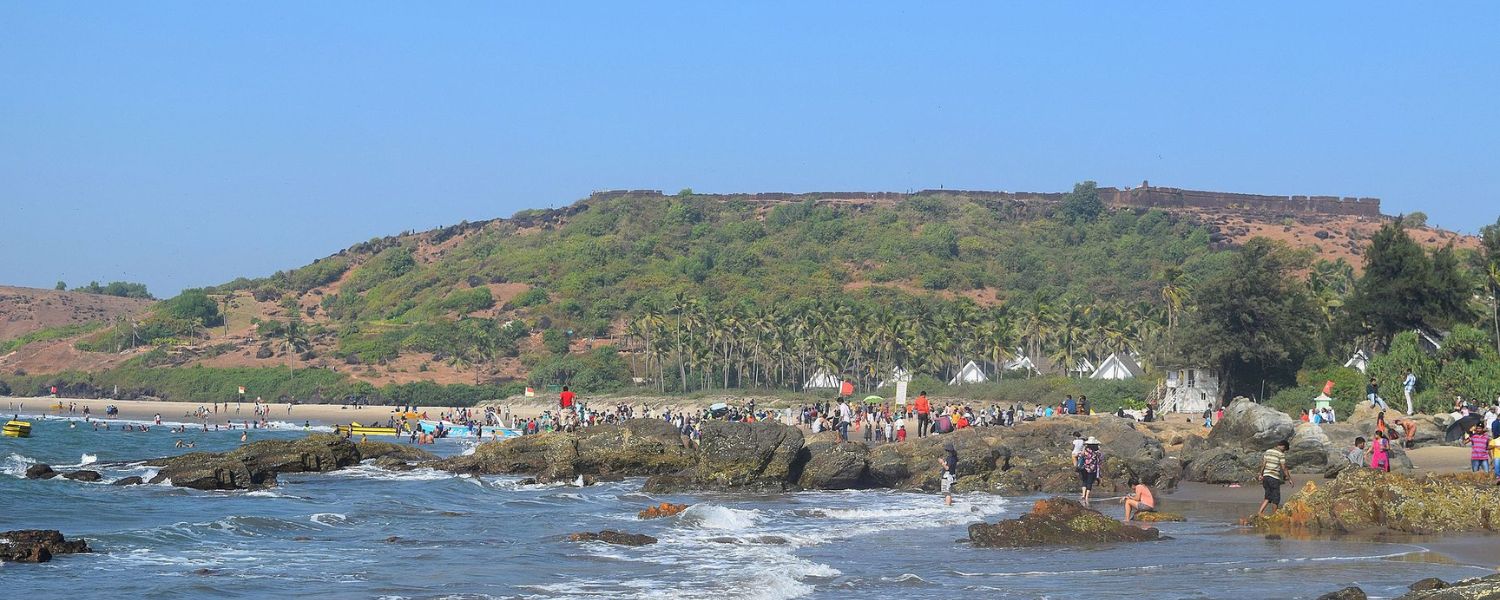
Nestled in North Goa, the Chapora Fort is a captivating testament to the region’s history. Initially constructed by the Bijapur king, Adil Shah, it was rebuilt by the Portuguese in 1617 on the site of a former Muslim sides.
Its strategic location facilitated surveillance against Hindu raiders eyeing Goa. However, despite its imposing presence, the fort succumbed to ruins over time.
The Portuguese briefly surrendered it to Maratha ruler Sambhaji in 1684, only to reclaim it later. Eventually abandoned in 1892, it now stands as a picturesque ruin, offering panoramic views of Vagator and Anjuna beaches.
Shri Shantadurga Temple – Kavlem
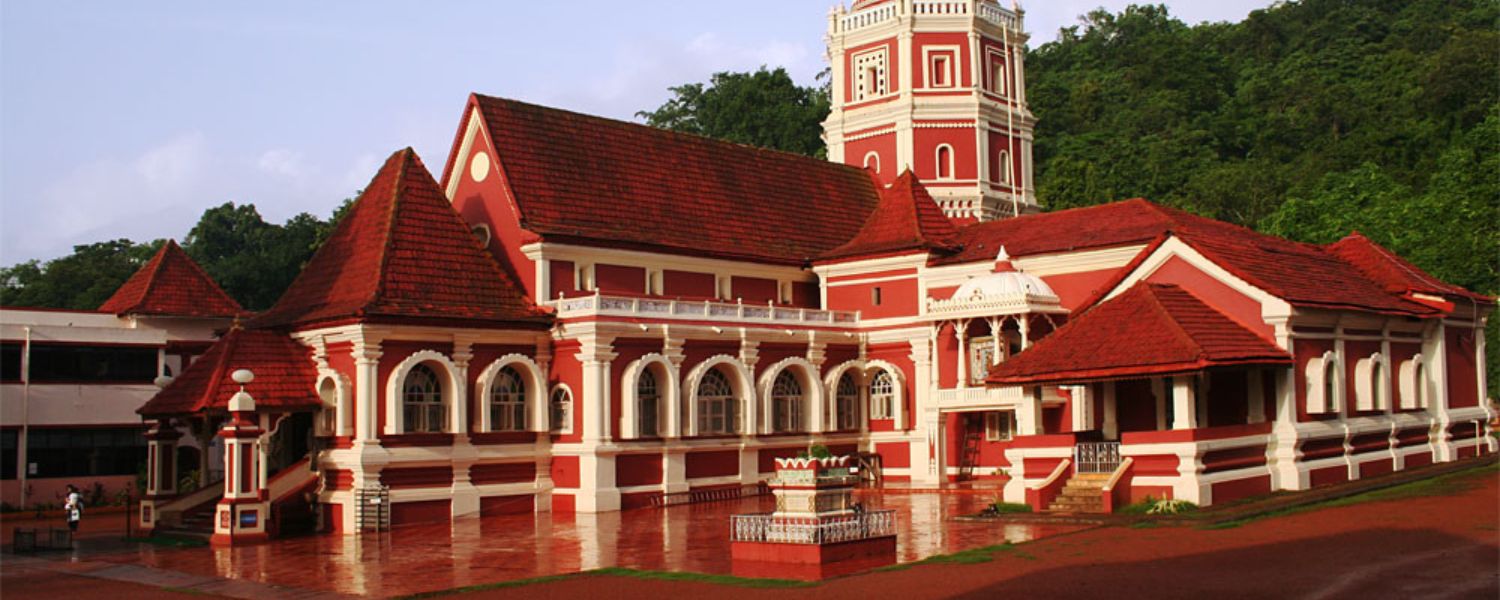
Nestled in the serene village of Kavlem in Ponda Taluka, North Goa, stands the majestic Shri Shantadurga Temple, a testament to Goa’sGoa’s spiritual significance.
Dedicated to Goddess Shantadurga, revered as the epitome of peace, this temple holds a special place in the hearts of peoples and visitors alike.
Legend has it that Goddess Parvati assumed the form of Shantadurga in a divine intervention to reconcile a fierce battle between Lord Shiva and Lord Vishnu.
Holding the two serpents representing the deities, Shantadurga brought harmony and tranquility, earning her the title of Goddess of Peace.
Initially situated in Cavelossim, the temple faced adversity during the Portuguese invasion of 1564. The deity was relocated to Kavlem, where a humble mud shrine was erected to preserve its sanctity.
Thanks to the efforts of Maratha ruler Shahu Raje of Satara and his minister Naro Ram Mantri, the shrine blossomed into the grand temple we see today, with its foundation stone laid in 1730 and completion achieved by 1738.
St. Augustine Tower / Church Of St. Augustine
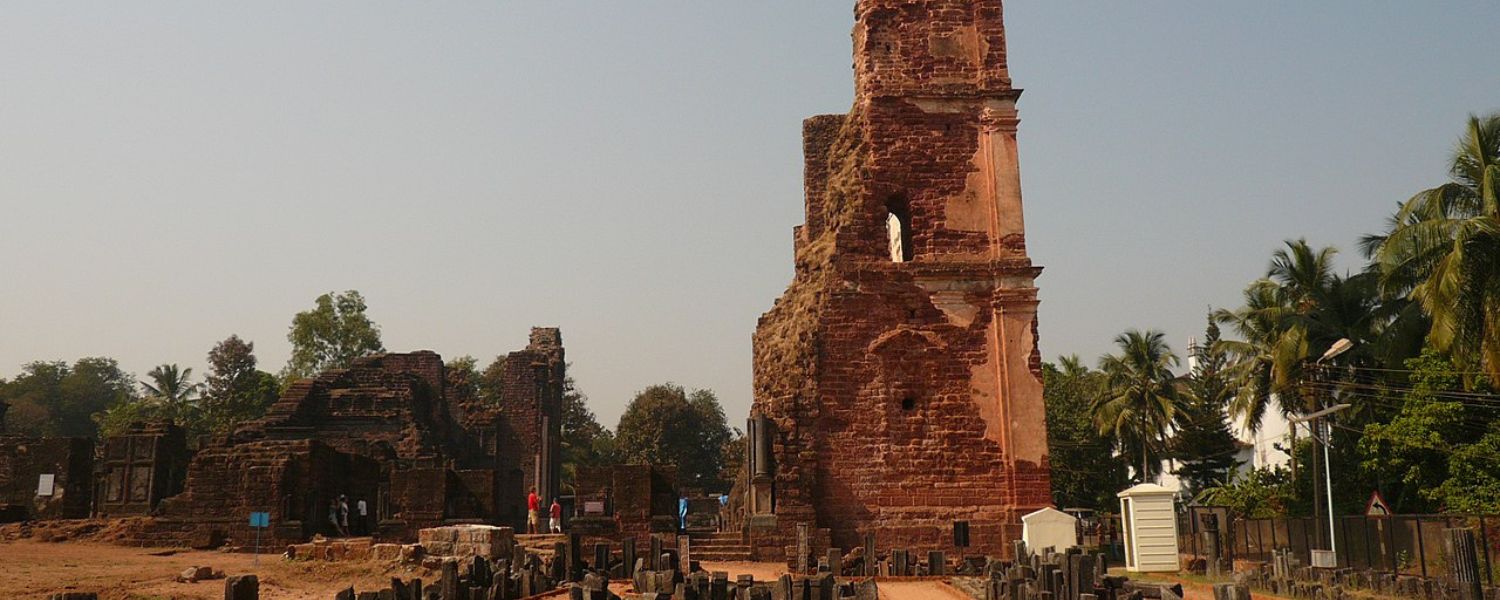
Step into the historical tapestry of Old Goa, and you’ll encounter the hauntingly beautiful ruins of the Church and Monastery of St. Augustine.
This architectural marvel, dating back to 1572, is a poignant reminder of Goa’sGoa’s colonial past and spiritual legacy.
Crafted by the 12 Augustines, the church and monastery flourished until a Portuguese decree led to their abandonment.
The iconic 46-meter Bell Tower, constructed with laterite, stands tall amidst the remnants, beckoning travelers to delve into its storied past.
Once adorned with eight opulent chapels and four altars, the church now echoes with whispers of ancient prayers.
The bell, once housed in the Fort Aguada Lighthouse, now resonates from the Church of Our Lady of Immaculate Conception in Panaji, a testament to the enduring spirit of Goa’sGoa’s religious heritage.
Shri Mahalaxmi Temple – Bandora

The revered Shri Mahalaxmi Temple stands in the quaint village of Bandora, about 4 km from Ponda in North Goa.
Dedicated to Lord Vishnu’s consort, Mahalaxmi, this temple holds profound significance for Hindus and attracts pilgrims and tourists alike.
What sets this temple apart is its unique feature the Devi is adorned with a linga on her head, symbolizing her immense power.
The idol of Mahalaxmi, with its four arms holding a sickle, club, dagger, and a vessel containing Prasad and flowers, resembles the Mahalaxmi idol at Kolhapur.
Interestingly, the temple’s Sabha mandap boasts a gallery of 18 images, among the largest collections of wooden Vishnu images in world heritage sites in India.
The temple’s history traces back to the Shilahara rulers and the early Kadamba Kings of Goa, who revered the Goddess Mahalaxmi. Initially located in Kolambe near present-day Colva Beach, the temple faced destruction by the Portuguese.
However, devotees safeguarded the murti of Mahalakshmi, eventually relocating it to the village of Talaulim, where it found sanctuary in the home of a priest.
Cabo De Rama Fort

In South Goa places, overlooking the Arabian Sea, stands the majestic Cabo De Rama Fort, also known as The Cape of Rama.
Its name harks back to when Rama, the hero of the epic Ramayana, sought refuge here with his wife Sita during their 14-year exile.
The fort’s history is rich, having been occupied by Hindu rulers before being rebuilt by the Portuguese in 1763.
This formidable fortress boasts elaborate defenses, complete with a moat, gatehouse, and several bastions, many of which still bear witness to the cannons that once defended it.
Within the fort’s walls lies a well and two springs, one dispensing cold water and the other hot, adding to its intriguing allure. Additionally, a large water tank with stone steps descending further emphasizes the fort’s strategic importance.
Mormugao Fort
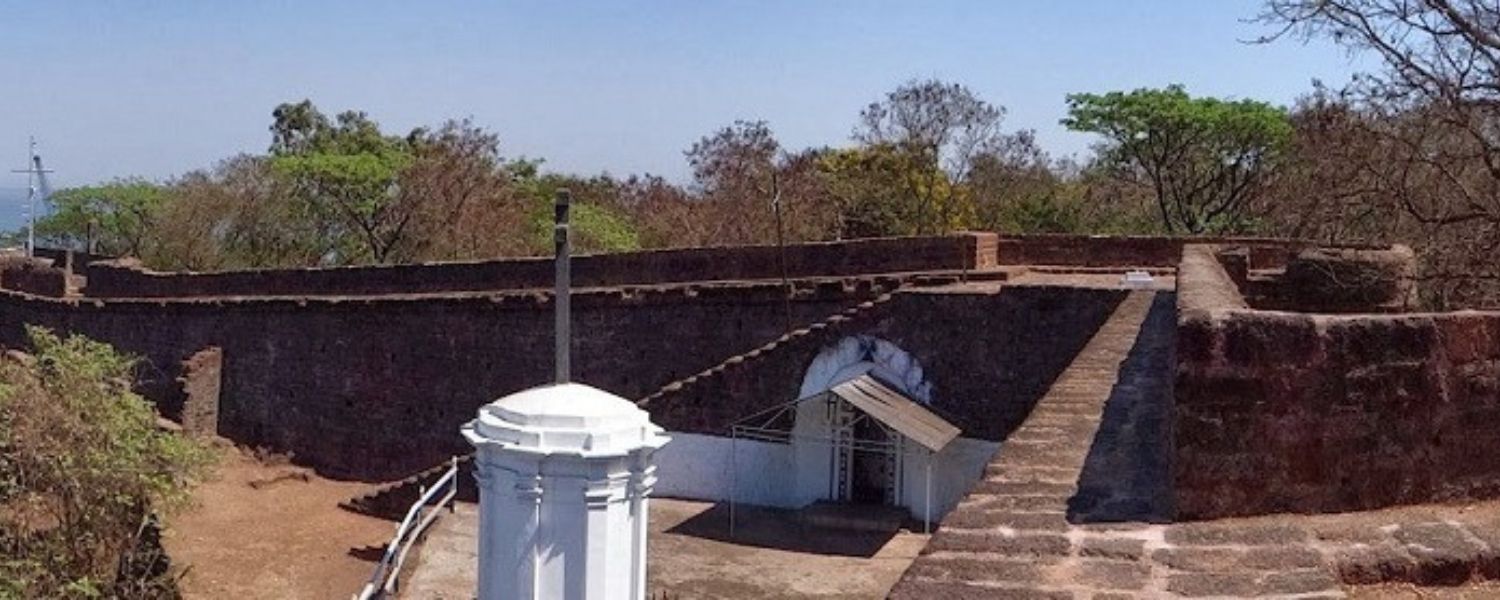
Nestled 33 km away from Panjim Kadamba Bus Stand and merely 4 km from Vasco Da Gama Railway Station lies the historic Mormugao Fort, a testament to Goa’s rich past.
Constructed in 1624 by the Portuguese to safeguard the harbor, this formidable fortification stands proudly near Mormugao Port in South Goa.
Initially vital for protecting territorial waters, the fort eventually lost its significance due to repeated Maratha attacks, leading the Portuguese to abandon the township for Old Goa.
Despite its glorious past, today, Mormugao Fort offers visitors breathtaking views of the sea, with only remnants like the chapel and a portion of the boundary wall left to recount its history.
St. Francis Of Assisi Church

Approximately 9.2 km from Panjim Kadamba Bus Stand and a short distance from Vasco Da Gama Railway Station, St. Francis of Assisi Church is a majestic relic of Goa’s colonial past.
However, situated near the iconic Se Cathedral in Old Goa, this church is a UNESCO World Heritage Sites, showcasing the architectural prowess of the Portuguese.
Founded in 1517 by eight Franciscan friars, the church underwent several transformations before its current iteration was built in 1616.
With its nave adorned with chapels on either side and a captivating west-facing façade, the church is a must-visit for history enthusiasts and architectural lovers alike.
Conclusion
In conclusion, the Heritage Sites in Goa are not merely remnants of the past but living testaments to the region’s rich cultural and historical legacy.
These architectural marvels, including the Basilica of Bom Jesus, Aguada Fort, and Se Cathedral, are guardians of Goa’s narrative, inviting visitors to delve into centuries of tradition and heritage.
Moreover, sites like the Reis Magos Fort and Chapora Fort offer panoramic vistas, blending history with breathtaking scenery.
As travelers explore these landmarks, they journey through time, discovering the intertwined tapestry of Goa’s diverse influences and enduring spirit.
FAQ
Q: What are the famous heritage sites of Goa?
A: However, Goa boasts several renowned heritage sites, including the iconic Bom Jesus Basilica and the majestic Fort Aguada. Additionally, visitors can explore the captivating exhibits at the wax museum in Old Goa, showcasing India’s rich history, culture, and heritage.
Q: What is the significance of the Bom Jesus Basilica in Panjim?
A: The Bom Jesus Basilica, located in Panjim, is a UNESCO World Heritage Site of historical and cultural importance. However, it houses the tomb of St. Francis Xavier, drawing pilgrims and history enthusiasts from around the world.
Q: Which is the oldest place in Goa?
A: Fort Aguada is one of the oldest and most well-preserved Portuguese forts in Goa. Situated on Sinquerim Beach, it offers breathtaking views of the Arabian Sea and serves as a reminder of the region’s colonial past.
Q: Which church in Goa is a UNESCO World Heritage Site?
A: The Basilica of Bom Jesus has been a UNESCO World Heritage Site since 1986. It is celebrated for its architectural grandeur and houses the revered mausoleum of St. Francis Xavier, making it a must-visit destination in Goa.










